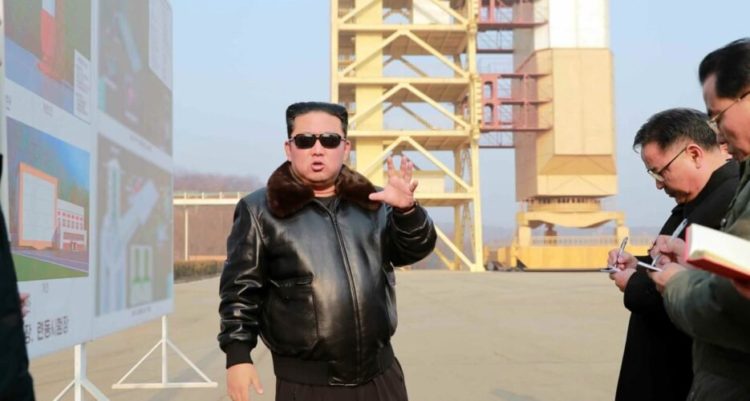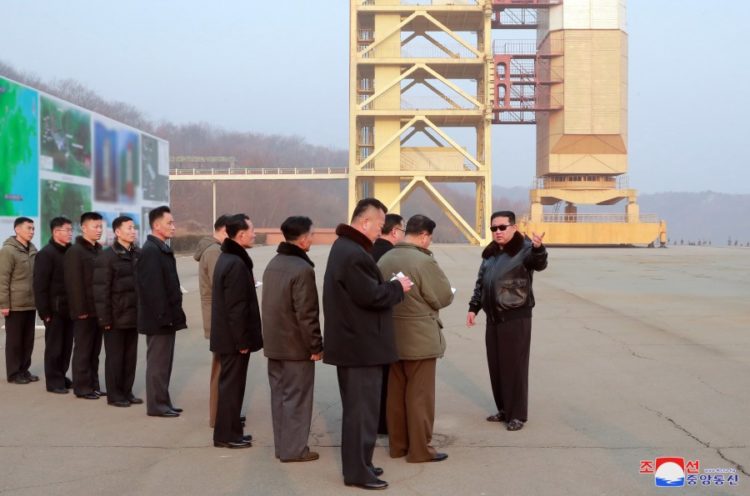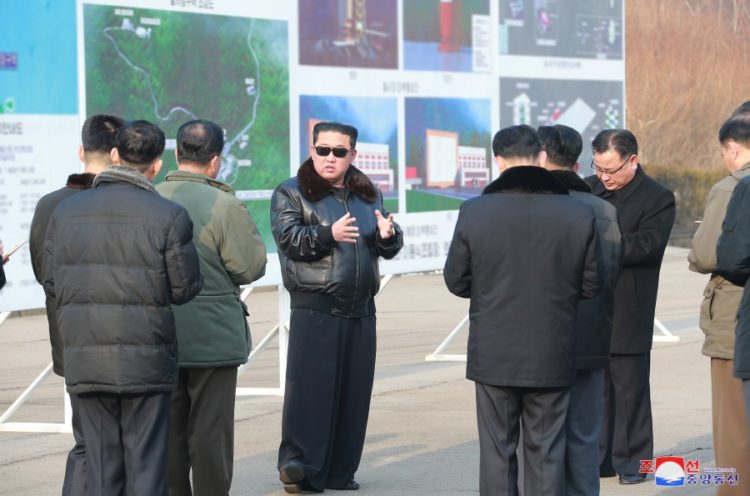
Recent and Future Developments of the Sohae Satellite Launching Station
Key Findings
- While minor changes have taken place at Sohae Satellite Launching Station over the years, satellite imagery and other sources indicate that the roots of the recently announced modernization and expansion program likely date to 2019 and the collapse of the February Hanoi Summit between Chairman Kim Jung-un and then-President Donald Trump.
- If details of Kim’s recent guidance are accurate, and all these tasks are to be accomplished, the ambitious project to modernize and expand the launch facility could take 1-3 years, depending upon the resources committed.
- Since January 1, 2022, only minor activity has been observed in available satellite imagery. Among these have been the presence of vehicles in the VIP housing area and vehicles and supplies of some sort on the launch pad.
Last month’s Rodong Sinmun and KCTV coverage of Kim Jong-un’s inspection of the “Sohae Satellite Launch Ground”—North Korea’s only permanent and operational launch facility—with members of the Munitions Industry Department, Academy of National Defense Science, and National Aerospace Development Administration has led some outside of the country to characterize the reporting of the visit as establishing a new modernization or development program for the facility or indications of a forthcoming satellite launch. However, these characterizations are inadequate and overlook a deeper understanding of the facility’s development.1

While minor changes have taken place at Sohae Satellite Launching Station over the years, satellite imagery and other sources indicate that the roots of Kim’s announced modernization and expansion program likely date to 2019 and the collapse of the February Hanoi Summit between Chairman Kim Jung-un and then-President Donald Trump. Satellite imagery from the following month showed that North Korea rapidly rebuilt both the previously disabled vertical engine test stand and the launch pad’s rail-mounted rocket transfer structure.2 This immediate rebuilding is a clear indicator that North Korea had plans in place to demonstrate resolve should the summit talks collapse and were a direct challenge to the position presented by then-President Trump during the summit. Following this, in 2020, Kim apparently set in motion the expansion and modernization program that he subsequently was referring to during last month’s inspection visit.
The North Korean media reported that during his recent visit, Kim,
…evaluated the present state of the ground, and advanced the task to modernize it on an expansion basis… He also set forth the task of building some facilities on the launching ground.3
Among the more specific items mentioned were,4
- “Reconstructing on an expansion basis the launching ground zone and the facilities for the general assembly and trial gearing of rocket and for the trial gearing of satellite…
- establishing extra facilities for the injection and supply of fuel…
- modernizing parts of the launch control facility and major technical posts on an expansion basis…
- expanding the capacity of the engine ground jet test site…
- ensuring the convenience of carrier rocket transport…
- improving the ecological environment around the launching ground…
- building a grandstand in the safe zone opposite the launching ground.

The first indications of the 2020 program became visible in satellite imagery during March of that year when a remarkably rapid road construction project was set in motion. This program witnessed the grading of approximately 12.8 kilometers of new roads through the hills and valleys on the north and east sides of the facility (see Sohae Satellite Launching Station Image Map). The size and location of these roads lend credence to Kim’s 2022 guidance to expand several of the existing facilities and, more significantly, to construct several new ones.
In the hills on the west side of the main facility road, four isolated loops in the road network suggest locations for at least four new testing facilities of various types. While other sections of the road suggest locations for various types of support or research facilities. One short section of the road network, in a shallow valley that terminates in a circle, suggests the potential for an entrance to a future underground facility. On the east side of the main facility road, several loops in the road network suggest small support facilities and an expansion of the VIP housing area. Additionally, two short sections of road that terminate in circles on opposite sides of a hill mass suggest entrances to a future underground facility.
In early 2020, certain critical programs such as the Sohae modernization and development program were apparently suspended as the growing COVID-19 crisis caused massive societal disruptions within North Korea. By late 2021, as the COVID-19 crisis was easing, the decision to reinstate the earlier Sohae modernization and development program was apparently made.
If details of Kim’s recent guidance are accurate, and all these tasks are to be accomplished, the ambitious project to modernize and expand the launch facility could take 1-3 years, depending upon the resources committed.5
Since January 1, 2022, only minor activity has been observed in available satellite imagery. Among these have been the presence of vehicles in the VIP housing area and vehicles and supplies of some sort on the launch pad. How, or if, these are related to the modernization and development program is presently unclear.
It should be noted that North Korea has repeatedly demonstrated the capability to move supplies, equipment, personnel, and conduct operations at the Sohae Satellite Launching Station during periods of darkness or inclement weather. This makes any developments at Sohae other than major construction challenging to identify in commercial satellite imagery unless the North Koreans want them to be observed. These characteristics largely hold true for a future satellite launch.
What’s in a Name
Over the years, the Sohae Satellite Launching Station has been identified by North Korea, South Korea, and the United States using various names during different periods. The following is a brief overview.
North Korea: North Korea has most frequently used Sohae Satellite Launch/Launching Station and Sohae Satellite Launch/Launching Ground (서해위성발사장). Sohae (서해) is the romanization of the Korean for “West Sea,” the North Korean name for the Yellow Sea on which the facility is located.
South Korea: The South Korean government currently refers to the facility as the Tongchang-ri Launch Station (동창리 발사장, 39.688066 124.719990). Tongchang-ri is the name of the town 1.4 kilometers north of the facility entrance and of the special restricted area in which the facility is located. Historically, South Korea has used Tongchang-ri Satellite Launch Station.6 Subsequently, as the significance of launches from the facility to the North Korean missile program became apparent, the reporting name changed to Tongchang-ri Missile Launch Station, then to Tongchang-ri Launch Station.
United States: The United States initially identified the facility using some variation of the Yunsong Launch Facility. Yunsong (윤송, 39.647146, 124.736048) is the name of the small village 1.9 kilometers southeast of the vertical engine test stand. Some variation of this remains in use in some organizations. However, the North Korean “Sohae” became more commonly used over the years, somewhat replacing Yunsong in everyday usage. The designation appears to have followed variations somewhat similar to those of South Korea over the years. It is now commonly referred to as the Sohae Launch Station or Sohae Satellite Launching Station—without the term “missile.”
The authors wish to thank Morgan Waterman for her invaluable support for this project and the Sohae Satellite Launching Station image map.
References
- “Respected Comrade Kim Jong Un Inspects Sohae Satellite Launching Ground,” Rodong Sinmun, March 11, 2022. ↩
- Bermudez Jr., Joseph S. and Victor Cha. “After Hanoi Summit: Rebuilding of Sohae Launch Facility,” Beyond Parallel, March 5, 2019, https://beyondparallel.csis.org/hanoi-summit-rebuilding-sohae-launch-facility/. ↩
- “Respected Comrade Kim Jong Un Inspects Sohae Satellite Launching Ground,” Rodong Sinmun, March 11, 2022. ↩
- Ibid. ↩
- It should be noted that ambitious construction programs in North Korea often suffer delays due to limitations in the availability of funding, resources, construction assets, and personnel. ↩
- Tongchang-ri is sometimes transliterated as Tongchang-li. ↩

